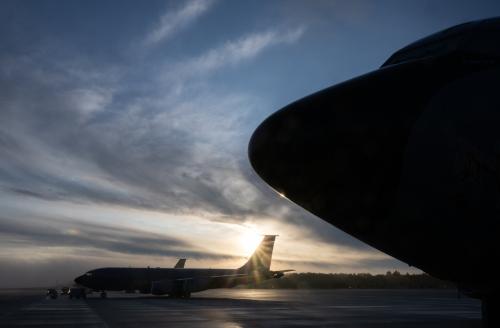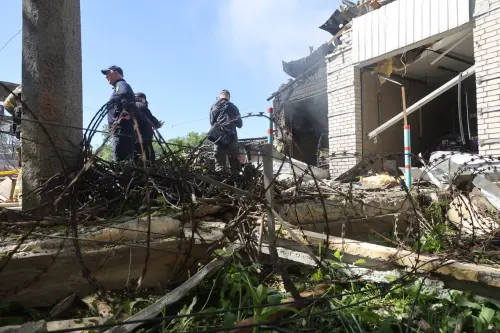Over the years, a dense code of laws has risen to divvy out the various authorities in our government. At the heart of these in national security are Title 10, which doles out the roles of manning, training and equipping the uniformed military, and Title 50, which defines various other roles, including the intelligence community. But what happens when we start to ignore those codes?
In the last few weeks, news stories have popped up that center on national security roles being “double-hatted” in some form or another. The Senate was recently asked to promote Army Gen. Keith Alexander to be commander of the new Cyber Command, which will coordinate and conduct America’s offense and defense in the emerging realm of cyberwar, as well as backstop domestic cybersecurity efforts at agencies such as the Homeland Security Department. Alexander, though, already had a job leading the National Security Agency, which conducts intelligence surveillance of that same space. This double-hatting is extending down into the service components that will support the new command such that we have a variety of serving military officers describing themselves as carrying out Title 10 and 50 roles, dependent on the exact task at that moment.
By contrast, the House recently held a hearing titled “Rise of the Drones II.” Thankfully, the session wasn’t about giving George Lucas another try at ruining the “Star Wars” franchise, but on the campaign of unmanned airstrikes into Pakistan against al-Qaida, the Taliban and other militant leaders. More than 120 airstrikes have been carried out by Predator and Reaper aircraft. This massive air war is not being conducted by the Air Force, but instead is being run not-so-covertly by the CIA.
And then there is the continual spate of private contractors popping up in unexpected (and traditionally governmental) national security roles. At the CIA, for instance, officials were upset to learn about a Defense Department official who retasked a strategic communication contract (originally meant to understand local tribal politics in Afghanistan) into a network of clandestine contractors who were working as spies on both side of the Afghan-Pakistan border. By contrast, the military was unhappy to learn about the huge private contractor role in operating and supporting the CIA’s own fleet of unmanned combat aircraft (including firms that are part of the Blackwater-Xe network). This, though, is the pot calling the kettle black, since as much as 75 percent of the field support to the Air Force’s Predators is outsourced, while the Army has a unit of drones that is Orwellianly described as “government owned-contractor operated.”
The thread that runs through all of this is not that we are placing bad people in important roles, nor that they are acting maliciously or even making mistakes. Rather, the issue is who is doing what and how are they authorized? Time and again, we are flouting the intent, if not the letter, of the most important legal codes that originally divided out roles in realms of policy and war.
THE IMPORTANT DIFFERENCE
Titles 10 and 50 were meant to be something different, and that difference remains very important both politically and legally. Double-hatting the NSA and military Cyber Command has raised deep concerns about the militarization not just of cyberspace, but of an intelligence agency’s core function of collection and analysis. By contrast, double-hatting the CIA into an operational air war command means its director (a former congressman from California) and his general counsels now handle not only weapons of war, but also issues of war, such as operational concept and strategy, rules of engagement, etc., that they do not have the background or mandate to perform. Indeed, if we are honest, the CIA has created the 21st century equivalent of the equally not-so-covert fleet of repainted B-26 bombers it sent to the Bay of Pigs invasion — and we remember how that one turned out.
And finally double-hatting civilian contractors into government jobs has repeatedly led not only to money gone missing and embarrassing episodes of contractors gone wild, but also places the contractors themselves into roles of war for which their legal status remains murky.
That we aren’t ready for these dilemmas isn’t surprising, as this strange morphing of uniformed military, civilian intelligence and private business roles seems to be driven more by bureaucratic expedience rather than strategic planning. We double-hatted the NSA and military’s Cyber Command because, well, they were the only ones who were organized already. We double-hatted the CIA into a war-fighting command because, well, no one wanted to have a public debate about the use of force in a third country, when we were already fighting in two. And we have double-hatted contractors into all these national security roles because, well, it avoids harder decisions about shifting roles and missions. But the result is an ever-building thicket of legal and policy questions that we’ll need either to disentangle or simply cut, à la the Gordian knot. Some have argued for the former, that we should junk the old laws. Washington Post columnist David Ignatius, for example, has cited government officials arguing for the creation of a new “Title 60“ that paints over the old divisions of Title 10 and 50.
That may work, but it ignores the fundamental point that someone wearing two hats has a balancing act in identity and status that usually leaves one of the roles either falling by the wayside or hidden under the other.
Call me old fashioned, but I prefer the method of one hat to one person, where warriors fight wars, rather than gather intelligence; intelligence officers gather intelligence, rather than fight wars; and contractors work in the workplace, rather than the battle space.



Commentary
Op-edDouble-Hatting Around the Law: The Problem with Morphing Warrior, Spy and Civilian Roles
June 1, 2010